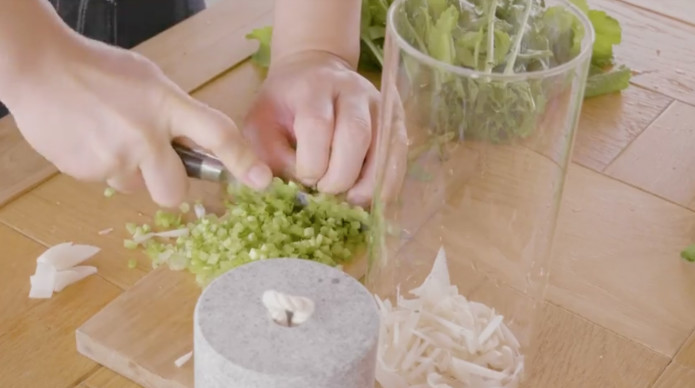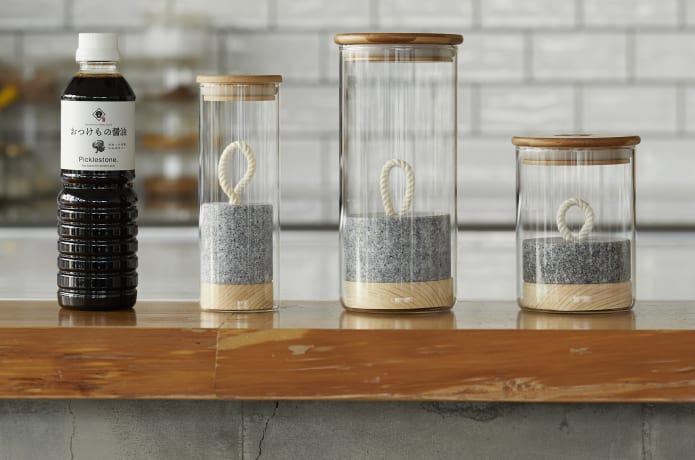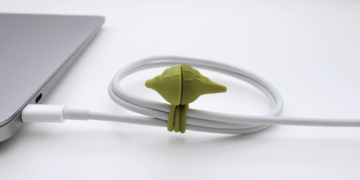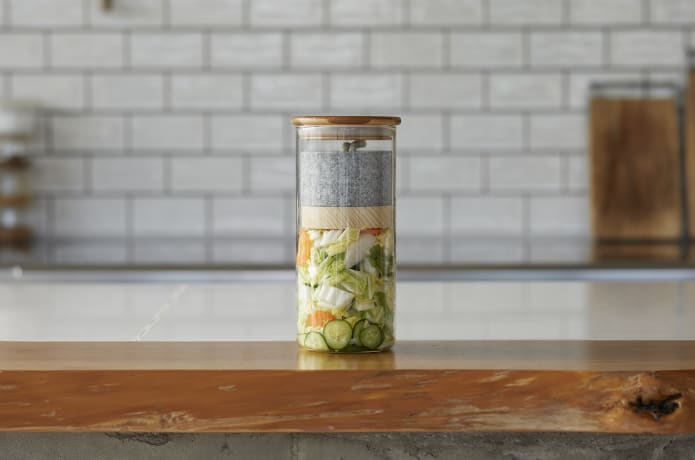
Tsukemono is a traditional Japanese pickle. Japanese pickles are getting famous day by day. Because it makes your regular veggies taste so good that you can eat them almost every day.
For a long period of time, Tsukemono can only be prepared in Japan. And it was difficult to get hands-on original Japanese traditional pickles outside of japan.
But recently, by the efforts of Tsukemono lovers, it is now possible to make yours at home with a few simple steps. Japanese pickle stone jars have been introduced with traditional spices all the way from Japan. All you now need is vegetables and a pickle stone jar with a starter kit at home. And you are good to go. These are the pickles that just can be made in one night. Yes, you read it right! This is what makes Japanese pickles different from the usual ones where you have to wait for a long time.
Design:
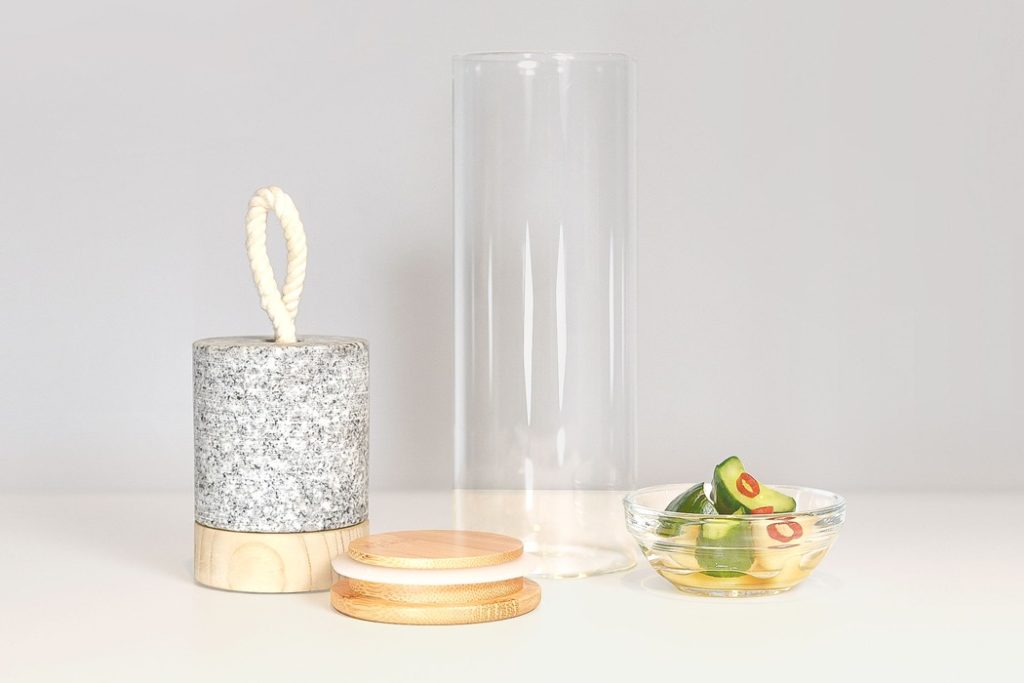
Picklestone jars are very similar to casual glass jars used in our kitchen. These jars come in three different sizes, and you can easily store them on the refrigerator door.
Picklestone jars feature Japan’s high-quality pickle stone and wood lid.
Both lid and pickle stone are easily removable for cleaning. And with the simple overall structure, these jars bring up an antique look to your kitchen shelf.
What is pickle stone?
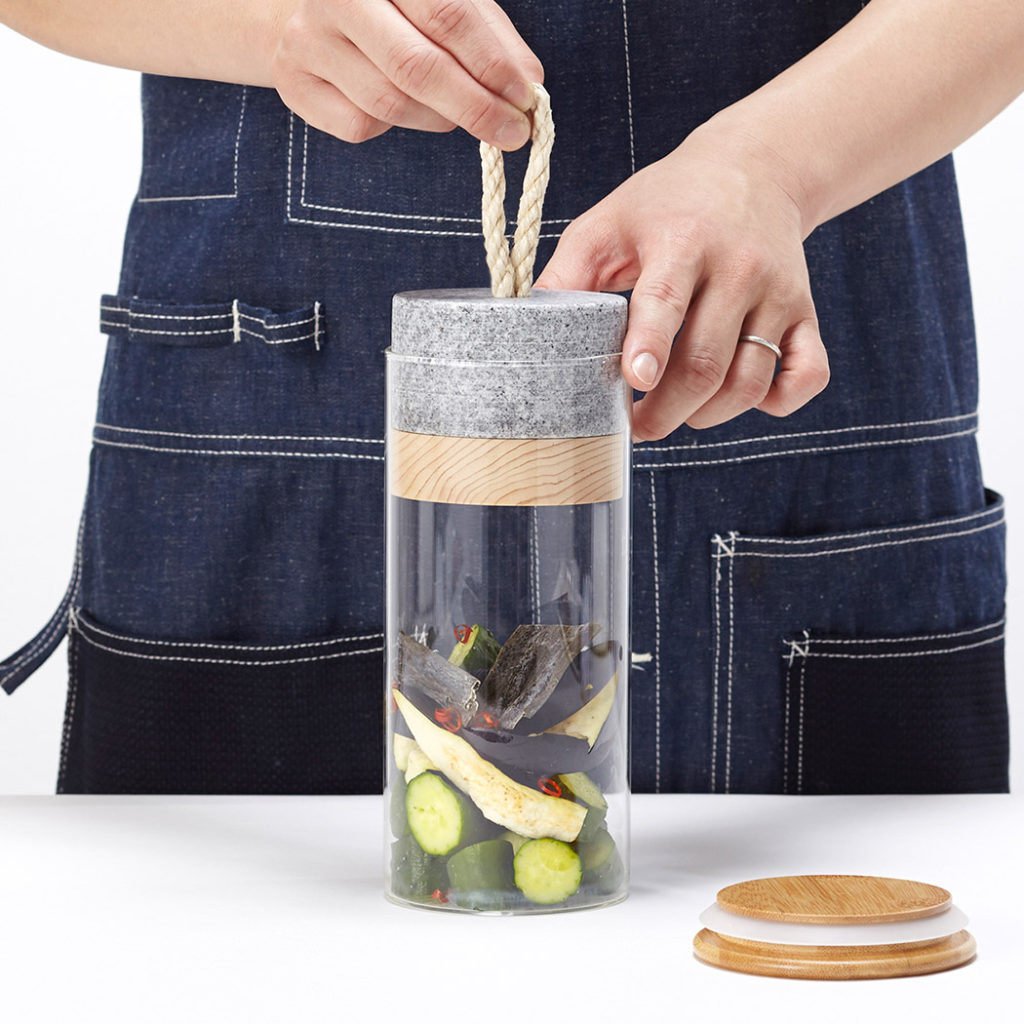
Picklestone is the secret master of overnight pickles. Yes, the commonly used pickle stone in Japan is the Aji stone. This stone is mined from Kagawa, which is famous for different stones, pickle stone is almost a 400years old stone.
But, why is pickle stone used? Pickle stone is used to put weight on vegetables. This is the secret to overnight fermentation of vegetables. Stone is put on vegetables prepared with kobo (Japanese traditional spice, salt, and soy sauce, or optionally dried chillies. When the stone applies pressure vertically in the jar, the rate of water drainage from vegetables increases significantly. Which results in the unique texture of Tsukemono and quick fermentation. Finely cut vegetables take approximately 4 hours to pickle. And in addition, sealing the jar with pickle stone and lid increases the perseverance as pickles do not come in contact with air.
How to use it?
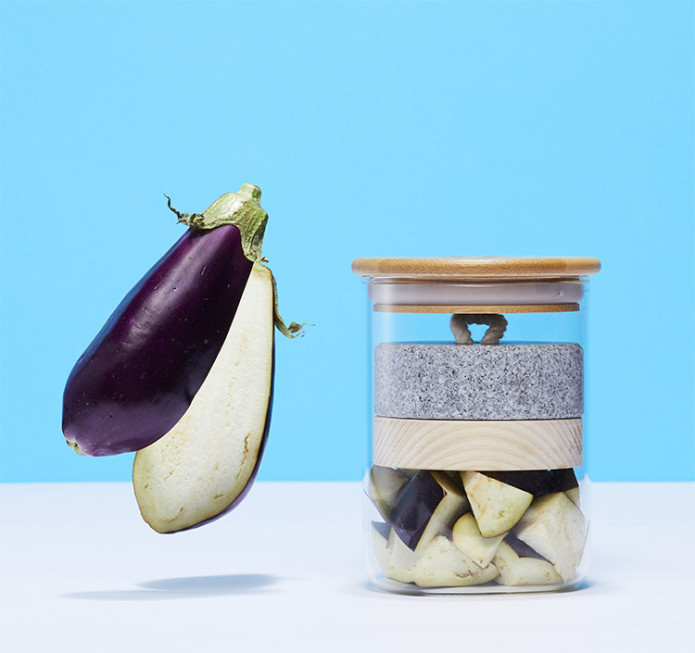
Now you know better about Japanese pickle stone jars and how it works. Let’s get into how you can prepare delicious Tsukemono at home with your new set of pickle stone jars. These jars come with a recipe book to prepare pickles in different ways. Most commonly you can pickle your vegetables by using salt only. But if you want to taste the closest to the original Japanese pickle you must have to use Japanese spices.
In Japan, locals use salt, konbu, and dried chillies to prepare Tsukemono. But, getting konbu is hard to get outside of Japan and may not be cost-friendly. That’s why pickle stone jars come with a starter kit which includes a traditional blend of soy sauce, konbu with dried chillies and salt.
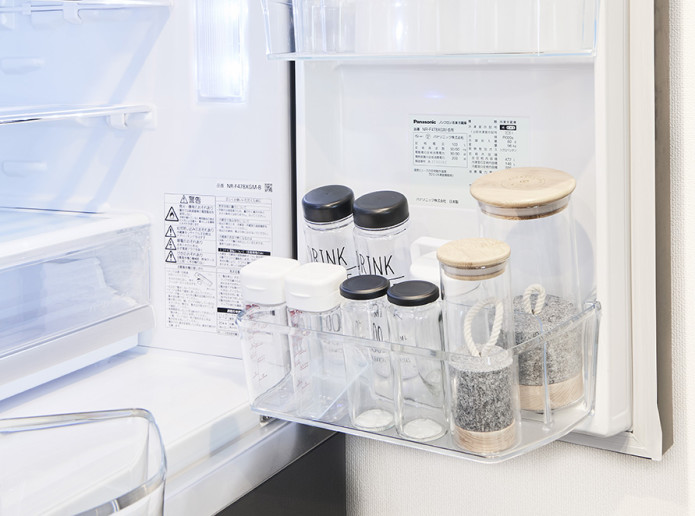
Here’s how to prepare Japanese pickle in Picklestone jars
- Cut your favourite veggies into chunks, or small pieces if you want a quick pickle
- Add some salt, magic soy sauce, and dried chillies as per your taste
- Give it a good mix and place picklestone firmly pushing vegetables.
- Put on the lid of the jar keep it in a cool and dry place
- And voila! Your Tsukemono is going to be ready soon.
- Enjoy it with your meal, or munch them as it is.
Japanese pickles have a unique texture very different from the oily texture of traditional pickles. We highly recommend getting your picklestone jars today to try them out!
This quick pickle method can also be very helpful to avoid food waste. So, next time if you have any extra veggies just put them in and enjoy them in a better way.
Benefits of Japanese pickle:
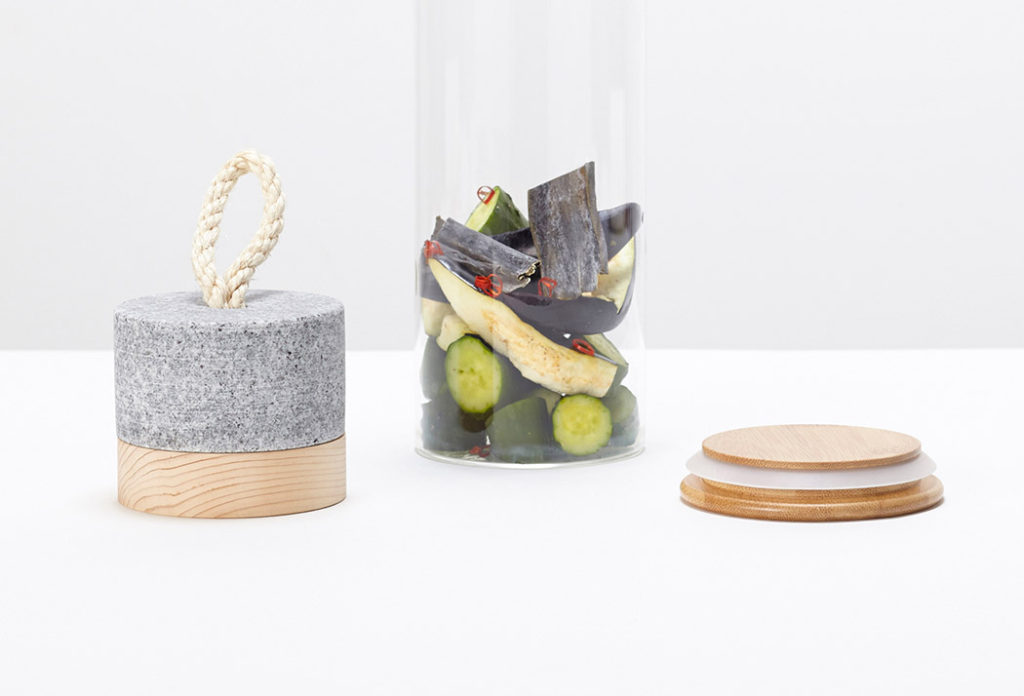
If you can’t eat raw vegetables in your daily routine, pickle them. This will help you to intake plenty of fibers and vitamins. Also, the fermentation releases lactic acid and bacteria which improves your intestinal digestion. Japanese pickle is the best vegan food for everyone, you can enjoy it with rice, meat, and literally anything!
To get more details on this product, head over to Tsukemono Japanese Picklestone jar.
